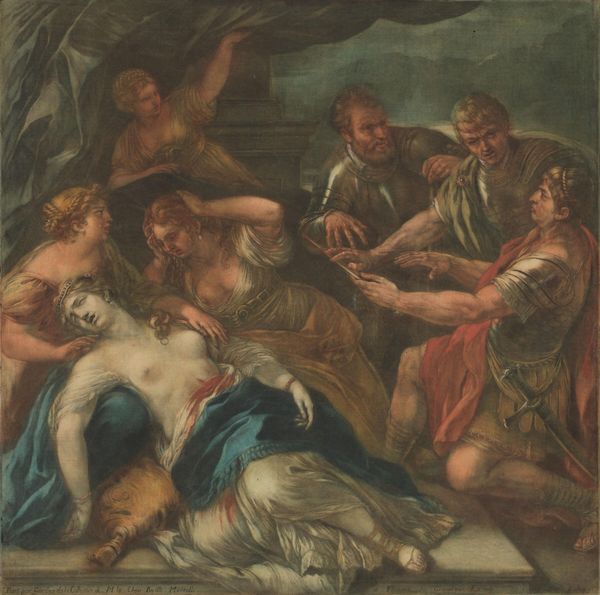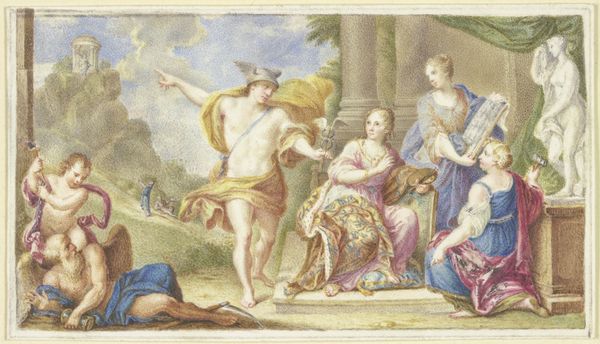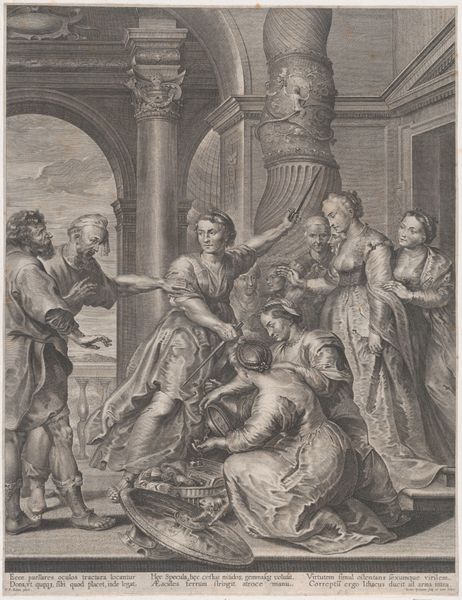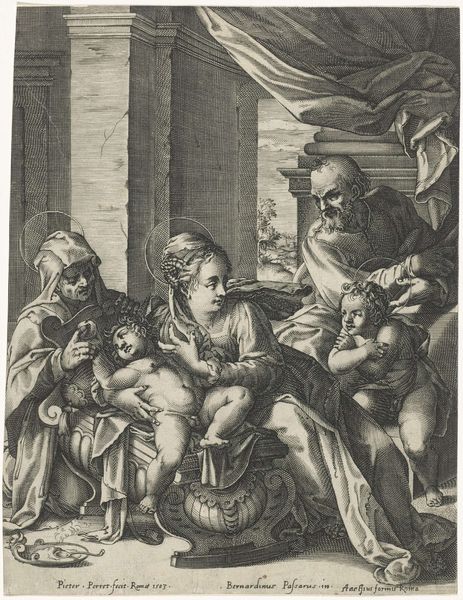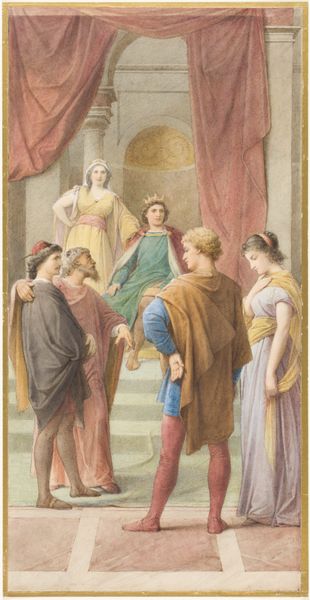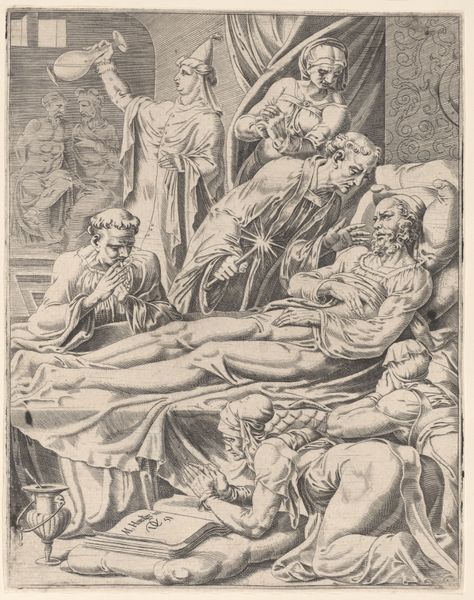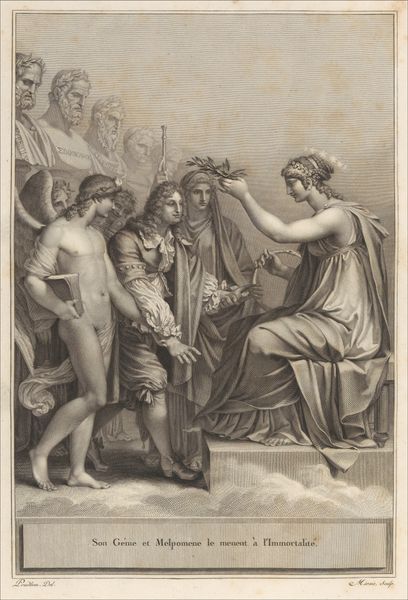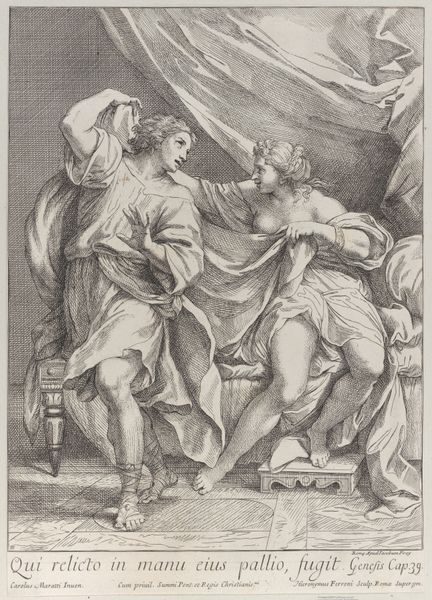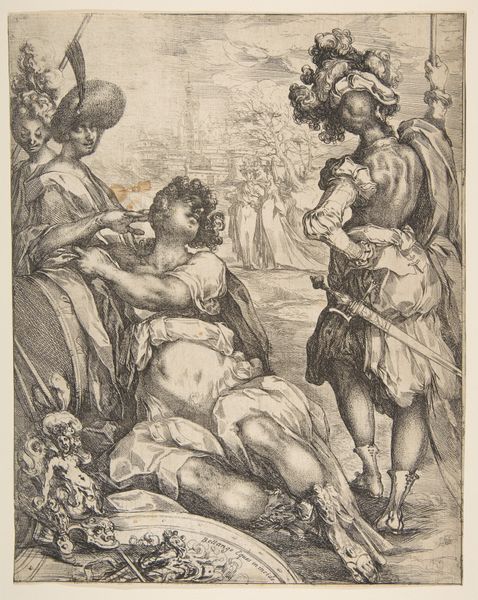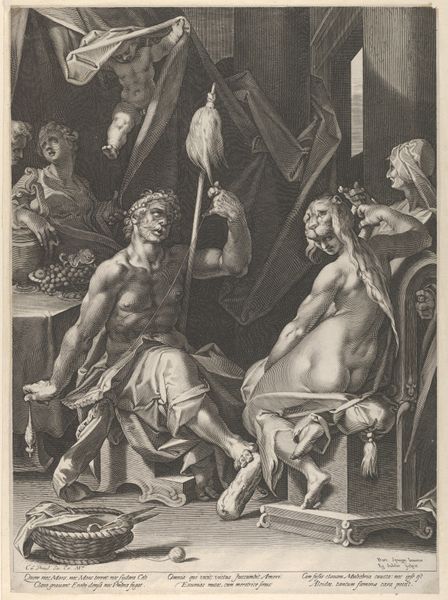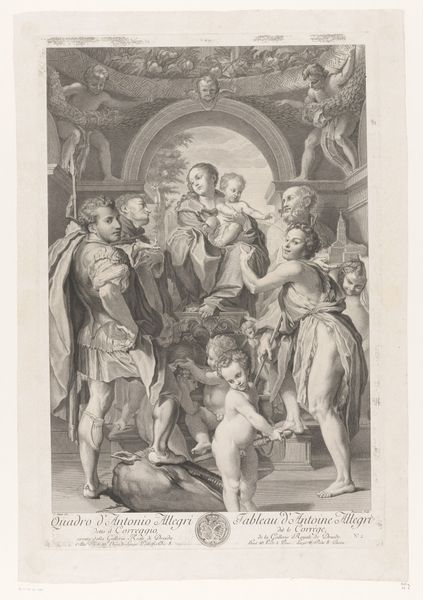
drawing, tempera
#
portrait
#
drawing
#
baroque
#
tempera
#
french
#
14_17th-century
#
history-painting
#
portrait art
Copyright: Public Domain
Curator: This artwork, entitled "Virginia's Death," is a tempera and drawing work that resides here at the Städel Museum, and was created by French artist Elisabeth Sophie Chéron during the Baroque period. Editor: Well, my first impression is dominated by that intense blue, almost aggressively contrasting with the muted tones around it. It feels like a spotlight highlighting the moment of death but it’s the texture of it that first grabs you – the fabric, the rendering. What's known about the production techniques here? Curator: Given Chéron's focus, the drawing involved meticulous planning for its historical narrative. Tempera offered vibrant, albeit quick-drying, qualities. As a woman artist in her era, the themes and patronage become particularly crucial for understanding her professional navigation. It's interesting that her focus in many works was on portraying heroic women. Editor: Indeed! This artwork really underlines the politics of representation during that time. Who gets to be a hero? Whose stories are being shown? In a museum setting, it further cements the power dynamics. A painter during the Baroque period consciously selecting a historical narrative--especially of a Roman woman—speaks volumes. How was "Virginia's Death" perceived originally, and has that changed over time? Curator: Well, at the time, the classical subject matter aligned with the artistic expectations. The way the artist depicted emotion was highly appreciated. Later interpretations question the gender dynamics in history and challenge patriarchal power structures. Some see it as Chéron finding autonomy in depicting the scene through her own eyes. The accessibility to pigments, artistic training and support from wealthy patrons largely determined her opportunities. Editor: Absolutely. Looking at "Virginia's Death," considering it’s material production combined with the history and politics—sheds light not only on artistic expression but also broader power dynamics present during its time and the centuries following its creation. Curator: Right. So next time, think less about whether you "like" a painting, and more about *why* it exists as it does. Editor: Precisely, what societal roles is this object playing even now.
Comments
No comments
Be the first to comment and join the conversation on the ultimate creative platform.
